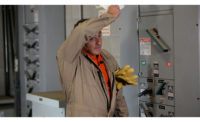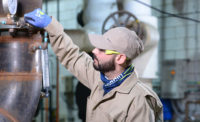In 2019, the World Health Organization (WHO) officially recognized employee burnout as an “occupational phenomenon.” They classify burnout as a syndrome stemming from “chronic workplace stress that has not been successfully managed.”
Burnout is distinguished by the WHO as:
- Feelings of exhaustion or depleted energy;
- Increased mental distance from one’s job;
- Feelings of negativity or cynicism related to one’s job; and
- Reduced professional efficacy
A 2018 Gallup study surveyed 7,500 full-time employees and found that two-thirds of surveyed workers felt “burnt out” sometimes, very often, or always. This is serious business for any safety manager, especially for those managing workers in high-risk environments where tired workers can be more likely to have incidents.
What are the symptoms of Worker Burnout?
- Becoming disconnected/isolated from the work environment
- Lacking energy or showing consistent fatigue
- Increased absenteeism
- Unusual seclusion and distance from others
- Cynicism or a newly negative attitude
- Increased tendency for accidents
However, it should be noted that different workers experience different burnout symptoms. Some workers experience burnout without exhibiting any of these symptoms. It’s important to take your people and their individual personalities into account when deciding how to act.
What causes Worker Burnout?
- A lack of independence or occupational control – When your workers feel they have no input in deciding how to perform a task or simply grow apathetic about work in general
- Vague job expectations – Uncertain measures of success or tangled lines of authority
- A negative work environment – Low morale, harassment, discrimination, etc.
- A lack of social structures/rewards – Being secluded at work, or a lack of recognition or fair compensation
- Poor life/work balance – Overworking to the point of exhaustion or constantly thinking about work outside of the job-site
- Thinking about stress from home on top of work responsibilities – arriving to work already stressed creates a lack of focus on their daily activities
How to Avoid Worker Burnout
There are ways to make sure your workers are energized and feel like they are surrounded by a caring and conscious safety culture.
Encourage Leadership – Increase the rotation of safety committee members to give all interested workers a chance to participate in meetings. This can even help to motivate and identify future company leaders.
Personalize Communications – Encourage your more reserved and introverted workers to speak up about any issues they may have in smaller group settings like toolbox talks and one-on-one conversations.
Acknowledge Worker Contributions – Use the power of empowerment by rewarding workers who speak up about safety hazards or suggest more efficient ways to perform tasks. This helps create a culture where workers feel they can make a difference and it helps you promote safety standards at work.
Set-Up Team Building Events - Help build more camaraderie in your team by organizing optional activities like volunteering at a local charity or creating a company-wide bowling league.
Emphasize Personal Health – Promote healthy living habits like getting enough sleep before shifts, eating healthier, drinking more water, and taking regular breaks throughout the workday. If one of your workers is dealing with personal stress from outside of work, refer them to any counseling or HR services at your company.
All of these tips are derived from the same general ideas of recognition and open-communication between yourself and your workers. Letting your workers know they matter and that their contributions are important to the team can be your best strategy for preventing employee burnout.



